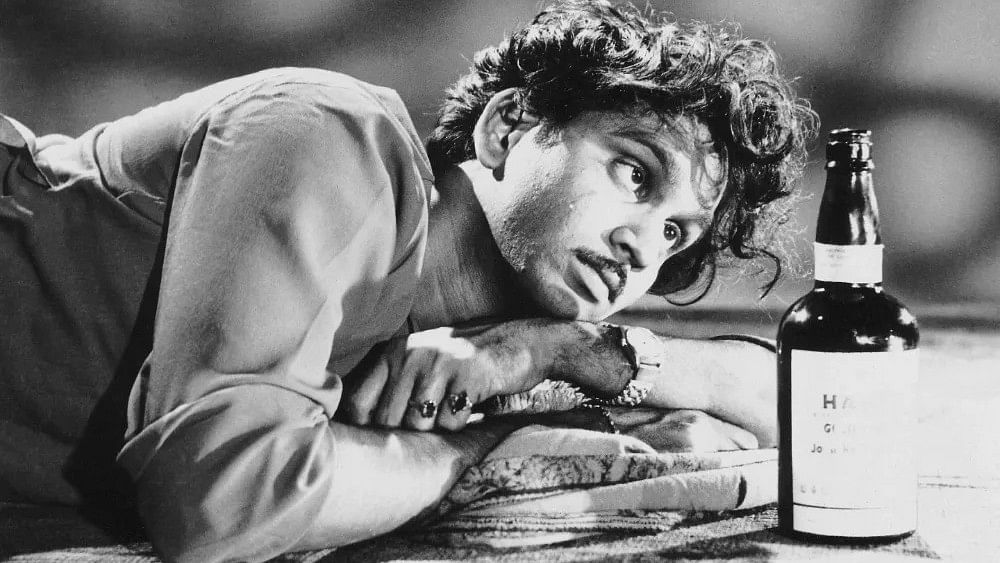
By arrangement
September 20 will mark the birth centenary of veteran Indian actor Akkineni Nageswara Rao (ANR) who has entertained about four generations on the silver screen over the course of seven decades. He was born in 1924.
ANR, one of the two major pillars of the Telugu film industry, the other being N T Rama Rao, successfully maintained his popularity until his death in 2014. He was senior to NTR and the duo shaped the destiny of the Telugu film industry to develop it into the major entertainment industry that we see today.
Born in Ramapuram, Krishna District, of present-day Andhra Pradesh, ANR’s journey from walking barefoot in his younger days to the dizzy heights of stardom and becoming a symbol of Telugu identity could very well make an interesting story for a film. His life from being a poor farmer’s son to one of the most loved and respected actors in Indian cinema looks like it’s straight out of a fairy tale.
Owing to poor circumstances, he gave up schooling quite early and helped his mother in her daily chores. He had a penchant for acting from an early age. He used to stand before the mirror and imitate stage and cine artistes. His passion was spotted by his mother. In one of the interviews, ANR admitted his mother’s influence on him and said, “My mother has been my biggest inspiration in life. She encouraged me to pursue theatre at a very young age.” That’s how he began his career in stage plays at the age of 10, in 1934. He excelled in theatre, honing his skills with the Excelsior Amateur Dramatic Troupe.
ANR’s first movie appearance in a cameo role was in P Pullaiah’s ‘Dharmapatni’ (1941). In the same interview, he acknowledged the other biggest influence in his life — that of filmmaker Ghantasala Balaramaiah, who picked him from the Bezawada railway platform and signed as a lead for his film ‘Sitarama Jananam’ in 1944. After this, he never looked back and went on to carve a permanent niche in the hearts of cinema lovers.
He played varied roles and acted in 255 films, mostly in Telugu. He has also acted in a few Tamil and Hindi-language films. He was keen on experimenting with different genres. ANR’s first blockbuster was ‘Balaraju’ (1948) and he emerged as a swashbuckler. He saw similar success in films like ‘Keelugurram’ (1949) and ‘Rahasyam’ (1967), among others.
Tragic hero and a lover boy
He essayed the character of tragic lover Majnu in ‘Laila Majnu’ (1949) and his popularity skyrocketed with the 1953 film ‘Devadasu’ based on Sarat Chandra Chattopadhyay’s popular Bengali novel ‘Devdas’. His portrayal of Majnu and Devdas gave him the title ‘Tragic Lover’. He played similar roles in ‘Anarkali’ (1955), ‘Batasari’ (1961), ‘Mooga Manasulu’ (1964), ‘Prem Nagar’ (1971), ‘Premabhishekam’ (1981), and ‘Meghasandesam’ (1981), and garnered success.
He also ushered in the lover boy image that earned him the reputation of being the first actor to attract a large number of female audiences. He soon set a new trend in dancing, amplifying his lover-boy image. For the audience, he was both a lover boy who successfully wooed a lady of his choice in films like ‘Gundamma Katha’ and ‘Missamma’, and also suffered the ache of separation as seen in ‘Devadasu’.
Cultural ambassador
ANR is often quoted as a cultural ambassador of India as he enacted the roles of literary and cultural icons from different regions in India. He portrayed the great saint and writer Valmiki (‘Sri Rama Rajyam’, 2011), Sanskrit poet of Ujjain Kalidasa (‘Mahakavi Kalidasu’, 1960), Marathi Saint Tukaram (‘Bhakta Tukaram’, 1973), Saint Kabir (‘Ramadasu’, 2006), Telugu poet Ramakrishna (‘Tenali Ramakrishna’, 1956) the celebrated sculptor of Karnataka Jakanachari (‘Amarashilpi Jakkanna’, 1964), Tamil saint and poet Vipranarayana (‘Vipra Narayana’, 1954) and the Sanskrit poet Jayadeva of Odisha (‘Bhakta Jayadeva’, 1961). Not many artistes have enacted such a variety of cultural icons in India.
ANR, NTR, a great collaboration
Unlike the scenario in other southern states, there existed no rivalry between the two doyens of Telugu cinema — NTR and ANR. The two early pioneers of Telugu cinema remained friends and collaborated in as many as fourteen films. Many of them created box office records — ‘Mayabazar’ (1957), ‘Gundamma Katha’ (1962), ‘Missamma’ (1955) and ‘Chandragupta Chanakya’ (1977). They complimented each other in the films, never complaining about screen space. Their fans didn’t have a problem either. While NTR shined in the roles of Krishna, Ravana, Krishnadevaraya, and Chandragupta, ANR excelled as Abhimanyu, Narada, Ramakrishna, and Chanakya.
He breathed cinema
ANR was committed to cinema. Many times he expressed his willingness to breathe his last while performing. He remained true to his words. His cinematic journey ended with ‘Manam’ — three generations of the Akkineni family including himself, actor Nagarjuna, and grandsons Naga Chaitanya and Akhil acted in it. During the film’s post-production, he was hospitalised. Aware that his days were numbered, he summoned dubbing equipment to the hospital ward and dubbed his dialogues, literally from his deathbed. ‘Manam’ (2014) was released after his death and was a great tribute to the great artiste he was.
His life was a blend of peculiar and wonderful things. As a popular star, he enjoyed stupendous commercial success and yet remained a critically acclaimed artiste. Despite being a school dropout, ANR went on to master Telugu and English languages. He essayed the character of well-known saints on screen to perfection, yet remained an atheist throughout. He was not only an acclaimed artiste but also a successful film entrepreneur, and a well-known philanthropist. He was instrumental in shifting the Chennai-based Telugu film Industry to Hyderabad by establishing Annapurna Studios. This was a rare record for an Indian thespian, especially someone from such a humble background.
Akkineni Nageswara Rao’s work continues to inspire generations of filmmakers and actors, and his legacy as a legend in the Telugu film industry will always be celebrated.
(The author is a well-known film historian)